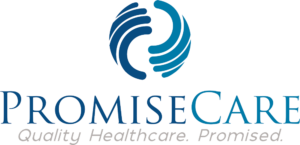
As the vibrant hues of autumn set in and Halloween approaches, it’s an essential time for those of us in the over-50 bracket to consider our health and wellness, especially with annual enrollment period for health insurance now in full swing. Have you thought about how changes in your health insurance might affect your management of new or existing health conditions?
As we age, staying active becomes increasingly important, yet it can be challenging as the days grow shorter and the weather cools. How can you modify your routines to stay fit and healthy during this time? By thoroughly understanding your health insurance options and preparing effectively, you can ensure that this festive season enhances, rather than hinders, your health and finances.
Here are some practical steps you can take this fall to protect and improve your health:
- Review Your Health Insurance Options: Make sure your current plan meets your needs, especially if you have any chronic conditions or anticipate needing more medical care. Look into Medicare or supplemental insurance plans that might offer better coverage.
- Adapt Your Exercise Routine: Consider indoor activities like yoga, swimming, or joining a gym if you haven’t already. These are easier on the joints and can be social, too, which is vital for mental health.
- Stay Connected: Engage with community or senior centers where activities and outings keep you active and integrated within a supportive network.
- Nutrition Focus: Eating well is crucial. Opt for seasonal vegetables and fruits that are high in antioxidants and fibers like squash, apples, and sweet potatoes. Consult with a nutritionist to tailor a diet plan that fits your health status and lifestyle.
- Monitor Your Mental Health: Shorter days can affect your mood. If you find yourself feeling down, talk to a healthcare provider about it. Staying mentally healthy is just as important as physical health.
- Prepare for the Cold: As the temperature drops, ensure you have the right gear for outdoor activities. Layering is key to managing body temperature, whether you’re going for a walk or attending a grandchild’s soccer game.
Remember, staying informed and proactive about your health insurance options and keeping active are pivotal to enjoying this enchanting season without any worries.
Let’s make this autumn not just about enjoying the festive ambiance but also about enhancing our well-being and vitality. Take these steps to heart, and enjoy a healthy, active season!
Main Points
- With the Medicare Annual Enrollment Period in full swing (October 15, 2024 – December 7, 2024), take this opportunity to review your health insurance options. Tailor your coverage to meet the evolving health needs that come with maturity, focusing on essential benefits such as arthritis management and mental health services. These are particularly crucial as we navigate our 50s and beyond.
- Maintain your vitality by integrating moderate-intensity exercises into your routine, suitable for our age group, such as brisk walking or cycling. These activities are not only beneficial for your physical health but also enjoyable during the cooler, picturesque autumn months.
- Embrace the season’s bounty by preparing nutritious fall recipes. This not only enhances your physical well-being but also supports local farmers and economies, making it a wholesome choice for both body and community.
- Investigate wellness programs and benefits available during the Annual Enrollment Period that are geared towards supporting an active and engaged lifestyle. These programs can offer valuable resources and community connections that enrich our lives, providing both physical and social benefits.
- Engage in activities and discussions that resonate with your experiences and interests. Whether it’s exploring new hobbies or revisiting old ones, staying active in the community, or sharing stories and recipes, find joy in every day and foster connections that uplift and inspire.
This tailored approach ensures that you are not only well-informed about your health care options but also equipped with practical tips to enhance your quality of life, fostering a sense of empowerment and connection within the community.
Understanding Medicare’s Annual Enrollment Period

The Annual Enrollment Period (AEP), previously referred to as “open enrollment”, runs from October 15 to December 7 and is a crucial time for those aged 50 and older to assess or adjust their health insurance plans. As you approach or navigate retirement, understanding and managing your healthcare options is more important than ever. This period allows you to ensure your health plan aligns with your current needs, which may include managing chronic conditions or planning for future healthcare services.
During AEP, your decisions impact not only your well-being but also contribute to a system that supports accessible healthcare for the community. This annual timeframe is the sole opportunity for most people to modify their health plans unless qualifying life events provide another chance.
You might be curious about the brevity of the Enrollment period. This design helps maintain a stable insurance market, encouraging individuals to secure coverage proactively, rather than delaying until a health issue arises. As you review your options, remember that assistance is available. Health insurance experts can provide guidance on choosing a plan that offers the benefits you need at this stage of life, such as preventive services and age-appropriate screenings, and they can also help you understand potential tax credits that might reduce your premiums.
Acting promptly is essential. Missing the December 7 deadline could mean waiting another year for coverage, leaving significant gaps in managing your health. This period isn’t just about adhering to guidelines; it’s about actively managing your health in a way that ensures you’re covered for regular check-ups and unexpected medical needs, thereby contributing to a stable, healthy future.
Participating in Annual Enrollment Period is particularly empowering for those over 50, as it underscores taking control of your health needs during a pivotal time in life. This engagement isn’t only a practical step in healthcare management but also a proactive approach to maintaining your independence and quality of life in the years to come.
Choosing the Right Plan

As you explore your options during this year’s enrollment period, it’s crucial to carefully assess what each plan offers and determine how closely it aligns with your unique health requirements, especially as you navigate the nuances of healthcare post-50.
Evaluating the costs is also key—consider premiums, deductibles, and out-of-pocket expenses to ensure you select the most economical plan without sacrificing necessary coverage.
For those of us in the vibrant chapter of our 50s and beyond, a health plan mustn’t only be affordable but also comprehensive enough to address age-specific health issues and support an active, fulfilling lifestyle. Whether you’re managing chronic conditions, staying on top of preventive care, or planning for unexpected health needs, the right insurance plan is a critical component of maintaining your health and peace of mind.
Here are a few practical tips to guide you in your decision:
- Review the Coverage for Preventive Services: As we age, regular check-ups and preventive tests become more important. Look for plans that offer extensive coverage for preventive services without additional costs.
- Consider Your Current Health Needs: Reflect on any ongoing treatments or medications you’re currently managing. Ensure your new plan covers these adequately so you can continue your care seamlessly.
- Plan for the Future: If you’re approaching or have entered retirement, consider how your health needs might evolve. Look for flexibility in services like telehealth, which can greatly benefit those who enjoy traveling or have less mobility.
- Explore Wellness Benefits: Many plans now offer benefits that support a healthy lifestyle, such as discounts on gym memberships or fitness classes tailored to older adults. These can be invaluable for keeping active and engaged.
- Seek Out Expert Advice: Don’t hesitate to consult with a healthcare advisor who can offer personalized advice based on your health history and future needs. Sometimes, the nuances of different plans can be complex, and professional guidance can be very reassuring.
Plan Coverage Essentials
When selecting the right health plan during the AEP, it’s crucial for individuals aged 50 and older to consider several aspects tailored to their unique health needs and lifestyle. Here’s a guide to help you navigate this important decision, ensuring you choose a plan that best supports your well-being as you age.
Firstly, assess the extent of coverage for pre-existing conditions and ensure the plan includes essential healthcare services. This is particularly important as you age, since older adults are more likely to have chronic conditions that require ongoing treatment. Ensuring comprehensive coverage can alleviate stress and provide peace of mind, knowing that your health needs are fully supported.
Additionally, review the health plans for benefits critical to maintaining your health, such as prescription medications, preventive care, and visits to specialists. These services are essential at this stage of life, helping to manage health issues that may arise with age. It’s also wise to consider plans that offer extensive coverage for vision, dental, and mental health services. As we age, maintaining sight and dental health becomes increasingly vital, as does supporting mental well-being.
Don’t forget to include coverage for age-specific concerns such as arthritis management, osteoporosis treatment, and other age-related health issues. Also, consider whether the plan offers benefits like wellness programs or discounts on fitness centers, which can be incredibly beneficial for staying active and engaged.
Ensure that the health plan’s network includes your preferred doctors and healthcare facilities. This factor is often overlooked but is crucial for ensuring you have access to trusted, familiar healthcare providers who understand the unique health challenges faced by older adults.
Comparing Cost Efficiency
As you navigate through the options available during AEP, it’s crucial to assess how cost efficiency aligns with the health care needs typical for those aged 50 and older. Evaluating health insurance premiums, deductibles, and out-of-pocket expenses is essential, as these factors directly influence your annual health spending and the overall effectiveness of your chosen plan.
For individuals in this age group, it’s particularly important to consider coverage details that affect frequent healthcare needs, such as prescription medications, regular doctor visits, and potential hospital stays. These elements can significantly impact your expenses if not carefully managed. To gain a comprehensive understanding of your potential outlay, calculate the total annual costs by summing up the premiums and estimated expenses based on your typical healthcare usage.
Moreover, the benefits of Health Savings Accounts (HSAs) or Flexible Spending Accounts (FSAs) shouldn’t be underestimated. These accounts provide tax advantages that can greatly enhance cost efficiency. By contributing to an HSA or FSA, you can lower your taxable income, leading to substantial savings—a particularly wise strategy for managing annual health expenses as you approach or enjoy retirement.
Do not hesitate to utilize resources available to you such as the FREE AEP focused events put on by PromiseCare and Boomers Insurance Services throughout the Enrollment Period. Call Member Services at 951-390-2840 or click here for information on attending these events. Consulting with insurance experts and using online comparison tools can be incredibly helpful. These resources aid in navigating the complexities of premiums, benefits, and tax advantages effectively, ensuring that you select the most cost-effective health insurance plan tailored to your needs.
Navigating healthcare after 50 doesn’t have to be daunting. With the right information and resources, you can make informed decisions that uphold your health and financial well-being. This approach ensures that you feel respected, informed, and empowered to manage your health care proactively as you age.
Importance of Physical Activity

Maintaining an active lifestyle is crucial as you age, not only for physical health but also for mental well-being and social engagement. For those of us in our 50s and beyond, incorporating regular physical activity into our daily routine can significantly improve our quality of life by reducing the risk of heart disease, diabetes, and certain types of cancer. Experts, including those at the CDC, recommend that adults aim for at least 150 minutes of moderate-intensity exercise each week.
This can include enjoyable and low-impact activities such as brisk walking, water aerobics, gentle cycling, or even dancing—options that are both fun and manageable.
Moreover, staying active is about more than just physical health. Regular exercise can enhance your mood, decrease stress levels, and increase your energy, helping you feel more alive and capable of enjoying this rewarding phase of life. It’s about caring for both your body and mind, and embracing the freedom that this stage can offer.
Integrating physical activity into your daily life doesn’t just benefit you personally; it also sets a positive example for your community and encourages a culture of health and wellness around you. Whether it’s joining a walking group, participating in a senior sports league, or simply taking daily strolls through your neighborhood, these activities provide opportunities to connect with others, share experiences, and enjoy mutual support.
To make the most of your fitness routine, consider these practical tips:
- Choose activities you enjoy to ensure you stay motivated.
- Start slowly and gradually increase your activity level to avoid injuries.
- Mix different types of activities to keep your routine interesting and comprehensive.
- Listen to your body and consult with healthcare providers to tailor activities that fit your health status and physical capabilities.
Seasonal Healthy Eating Tips

As the autumn season brings a delightful crispness to the air, it’s a wonderful opportunity for those of us aged 50 and older to embrace the rich flavors and nutritional benefits of seasonal produce. Fall offers an abundance of hearty vegetables and succulent fruits, such as squash and apples, which aren’t only delicious but also beneficial for our health.
Including these seasonal items in our meals can help maintain heart health, control weight, and boost immunity—key concerns for our age group.
Let’s delve into some enticing fall recipes designed to maximize these ingredients while keeping our health in mind, ensuring a festive yet healthy approach to seasonal eating.
Warm Butternut Squash Soup: This comforting soup is perfect for chilly evenings. Butternut squash is rich in vitamins A and C, vital for eye health and immune support, which are especially important as we age.
Apple-Cinnamon Oatmeal: Start your day with a warm bowl of oatmeal mixed with fresh apples and a hint of cinnamon. This meal isn’t only heartwarming but also packed with fiber, aiding in digestion and heart health.
Roasted Root Vegetables: A medley of carrots, turnips, and sweet potatoes roasted to perfection can serve as a nutritious side dish. These vegetables are packed with fiber and antioxidants, which play a crucial role in maintaining our overall health.
Incorporating these simple yet nutritious recipes into your diet can help address common age-related issues such as maintaining adequate nutrient intake and managing chronic health conditions.
Enjoy these flavors of fall, and take the opportunity to nourish your body in a way that supports a vibrant and healthy lifestyle.
Seasonal Produce Selections
Choosing seasonal produce such as pumpkins, apples, squash, and sweet potatoes during the Halloween season offers not only a delightful culinary experience but also significant health benefits, especially important for those of us aged 50 and older. Integrating these nutrient-rich foods into your meals supports overall wellness, helping to maintain energy levels and manage health concerns that often come with age.
By opting for seasonal fruits and vegetables, you’re making a wise choice for both personal health and the well-being of your community. Supporting local farmers by purchasing their produce can boost the local economy and minimize the environmental toll of long-distance food transport. This practice is particularly beneficial as it aligns with sustainable living principles, a thoughtful way to care for the world we leave to future generations.
Pumpkins, for instance, are an excellent source of vitamin A, crucial for maintaining eye health, which can become a concern as we age. Apples are rich in dietary fiber, promoting digestive health which is essential for preventing issues like constipation, often more prevalent in older adults. Embracing these seasonal offerings not only diversifies your diet but also introduces you to new, wholesome recipes perfect for maintaining a healthy lifestyle.
Additionally, engaging in the preparation and sharing of meals made with these ingredients can be a joyful, social activity, fostering connections with family and friends. This can be particularly meaningful during retirement years, offering a fulfilling way to spend time and share stories.
Fall Recipe Ideas
Embrace the vibrant flavors of autumn with delicious recipes that not only tantalize your taste buds but also cater to the unique nutritional needs of those aged 50 and older. As we age, incorporating seasonal ingredients like squash, apples, and pumpkin into our diets can be a delightful way to enhance meals, save on expenses, and support overall health.
Why not try a comforting squash soup or a savory apple and pumpkin casserole? These dishes aren’t only heartwarming but are rich in nutrients that are crucial for immune support and maintaining vitality. Adding a sprinkle of cinnamon and nutmeg to roasted vegetables can offer the dual benefits of a cozy aroma and anti-inflammatory properties, which are particularly beneficial as we navigate the colder months.
For those in their golden years, maintaining a balanced diet rich in vitamins and minerals is essential for managing health concerns that often come with age, such as heart health and bone density. Seasonal eating isn’t just a culinary adventure—it’s a proactive approach to reducing potential health issues and minimizing visits to healthcare providers. This can be particularly advantageous for those managing their healthcare through Medicare and supplemental insurance.
Moreover, engaging in the preparation of these meals can be a delightful way to stay active and can be a social activity if you choose to cook with friends or family. It’s also a perfect time to pass down beloved recipes to younger generations, creating lasting memories and traditions.
Family Health Insurance Options

Are you making the most of the family health insurance options available during Medicare’s Annual Enrollment Period? This period is crucial, particularly for those of us in our 50s and beyond, as it provides an opportunity to tailor health coverage to better meet our evolving needs.
Whether you’re approaching retirement or adjusting to changes in family dynamics, understanding different plans and potential financial assistance can significantly impact your healthcare expenses and the quality of care you receive.
Here’s a tailored guide to help you navigate your options:
- Individual vs. Family Plans: Individual plans cover one person, which might be suitable if you’re an empty nester, while family plans can include coverage for spouses and dependents, beneficial if you’re caring for a spouse or a dependent adult child. Evaluate which option aligns best with your current family health care needs.
- Employer-Sponsored Plans: These are often the most cost-effective, especially if your or your spouse’s employer contributes to the premiums. As you approach retirement, understanding how these benefits will change and what options you have for extended coverage is essential.
- Healthcare Exchanges: Utilize these platforms to compare a variety of insurance options. They’re particularly valuable for those who are managing specific health needs or who are looking for the most budget-friendly plans as they transition out of full-time employment.
- Financial Assistance: Concerned about costs? It’s crucial to explore your eligibility for subsidies or other financial aids which can significantly lower your monthly premiums. This is especially important as income may fluctuate during this stage of life.
Taking the time to thoroughly research and evaluate these options during AEP is key. Remember, choosing the right health insurance isn’t merely about finding affordable premiums but also ensuring that your health needs are comprehensively met.
Make this annual enrollment period count by making informed decisions that uphold both your health and financial stability as you navigate this vibrant chapter of life.
This guide aims to leave you feeling informed and empowered, understanding that thoughtful choices in health insurance can greatly enhance your quality of life as you age.
Evaluating Additional Benefits

Exploring additional benefits during the enrollment period is a key opportunity to enhance your healthcare plan with options tailored to the unique needs of those aged 50 and older. As you review these choices, consider how they can support your health, lifestyle, and wellness goals during this pivotal stage of life.
Adding dental and vision plans is crucial for maintaining your health as you age. Regular dental check-ups help prevent long-term issues and can mitigate costly treatments in the future. Vision coverage is equally important, ensuring you maintain optimal sight to enjoy your interests and daily activities, especially if you face age-related vision challenges.
Supplemental insurance becomes increasingly relevant as you navigate the complexities of health in later years. Options such as critical illness or accident coverage offer additional financial security for situations that your standard health insurance may not cover, providing peace of mind amidst unexpected health events.
Consider the advantages of flexible spending accounts (FSAs) too. These accounts allow you to allocate pre-tax dollars towards medical expenses, effectively lowering your taxable income and managing out-of-pocket costs associated with dental, vision, and other health-related services.
While assessing these options, don’t overlook broader benefits that some employers provide, such as educational assistance or transportation benefits. These perks not only enhance your overall compensation package but also improve your quality of life, supporting lifelong learning and ease of mobility.
If you would like help in deciding which plan might serve you best, PromiseCare is offering FREE workshops throughout the Annual Enrollment Period. The schedule can be found by navigating to the Medicare Annual Enrollment Period 2024 page.
Staying Active in Cooler Weather

As the chill of cooler weather sets in, it becomes especially important for those of us over 50 to find ways to stay active. Keeping physically active not only boosts your immune system but also helps manage age-related health issues and keeps you feeling vibrant and engaged in your community.
Here are four tailored strategies to maintain your activity levels and enjoy the cooler months:
- Home-Based Fitness Routines: Consider indoor activities that are gentle on the joints and can be enjoyed from the warmth of your home. Yoga, Pilates, and light strength training are excellent choices. These activities can be tailored to your fitness level and any specific health considerations, such as arthritis or mobility limitations.
- Engage in Social Sports or Groups: Participating in activities like walking clubs, bowling leagues, or swim classes at your local community center can provide both a physical and social boost. These groups offer a sense of camaraderie and accountability, making it easier to stay motivated.
- Smart Technology for Fitness Monitoring: Utilize wearable devices or mobile apps designed to track physical activity. These tools can be very helpful in setting achievable health goals and monitoring your progress. They’re also useful for reminding you to stay active throughout the day, which is crucial for maintaining mobility and energy levels.
- Enjoy Nature on Warmer Days: Whenever the weather permits, take the opportunity to step outside. Activities like gardening, short hikes, or even gentle bike rides can do wonders for your mental and physical well-being. Dressing in layers will help you manage the colder temperatures comfortably.
Staying active during the cooler months isn’t only vital for your physical health but also for maintaining independence and enhancing your quality of life as you age. Remember, every bit of movement counts towards a healthier, more fulfilled you!
Frequently Asked Questions
What Is Medicare’s Annual Enrollment Period?
Medicare’s Annual Enrollment Period presents a vital opportunity for you, especially as you navigate the nuances of health care in your 50s and beyond. This period, running from October 15 to December 7, allows you to carefully review and adjust your health insurance plan to ensure it aligns with your evolving needs.
As you prepare for or continue enjoying your retirement years, it’s crucial to have a health plan that addresses specific concerns such as chronic condition management, preventive health screenings, and increased medical needs that often come with age. This is the perfect time to assess whether your current plan covers important services like routine check-ups, specialist visits, and prescription medications effectively.
Here are a few actionable tips to make the most of the Enrollment Period:
- Evaluate Your Current Health Needs: Consider any recent health changes and anticipate needs that might arise in the coming year. For instance, if you’ve developed a new health condition that requires specialist care or costly medication, verify that these are covered.
- Understand Medicare Options: If you’re approaching or have surpassed 65, delve into how Medicare or supplemental plans can work best for you. It’s essential to understand the different parts of Medicare and how they cover various aspects of your health care.
- Consult Experts: Seeking advice from a health insurance counselor can provide clarity and direction. They can help compare different plans and suggest the best options based on your personal health and financial situation.
- Consider Your Lifestyle Needs: If you enjoy traveling, check if your plan covers health care services in different states or countries. For those who lead active lives, look for plans that offer wellness benefits like gym memberships or fitness classes.
- Review Plan Details Thoroughly: Pay attention to not only the premiums but also deductibles, co-pays, and coinsurance. These factors significantly affect your out-of-pocket expenses.
By using this time effectively, you ensure that your health insurance continues to support your lifestyle, health, and financial well-being. Remember, choosing the right plan not only impacts your own health but also ensures peace of mind for you and your loved ones.
Make sure you’re covered appropriately; it’s essential for maintaining your independence and enjoying your leisure activities without undue stress about health care costs or access.
What Is the Annual Enrollment Period in US Healthcare?
Medicare’s Annual Enrollment Period in US healthcare represents a crucial window for individuals, especially those aged 50 and older, to review and select their health insurance plans. It occurs annually from October 15 to December 7. During this period, you have the opportunity to explore various coverage options, verify eligibility criteria, and meet enrollment deadlines to ensure your healthcare needs are well-catered for in the coming year.
For those navigating the complexities of healthcare post-retirement or managing age-related health conditions, this time is particularly important. As you consider your options, you might find it beneficial to look into plans that offer comprehensive coverage for preventive services, chronic disease management, and wellness programs that are pertinent as we age.
Additionally, this is an ideal time to assess whether you qualify for any subsidies that can help reduce your costs. Understanding the nuances of Medicare, Medicare Advantage Plans, or Supplemental Health Insurance can be overwhelming, but it’s vital to ensure that you’re adequately protected.
Here are a few practical tips to help you during the AEP:
- List your current health needs and anticipated changes. Consider how your health might evolve and ensure your chosen plan covers these bases.
- Explore plans that offer additional perks suitable for your lifestyle, such as discounts on fitness clubs, access to nutrition counseling, and more.
- Consult with experts or use online resources tailored for those in the 50+ age group to help demystify the details of various health plans.
Conclusion
As Halloween approaches, it’s a wonderful time to reflect on our health and wellness, especially as we continue to enjoy the richness of life after 50. With Medicare’s Annual Enrollment Period commencing on October 15, it’s crucial to review your health care options to ensure you’re well-prepared for the years ahead. Selecting the right health plan is essential to cover needs that may arise from age-related conditions such as arthritis, or to support mental health and general well-being. Call Member Services at 951-390-2840, visit our offices, or attend one of the informational meetings organized by PromiseCare to help you decide on a plan or benefits.
Engaging in physical activity is also vital, promoting not just physical health, but also mental clarity and emotional stability. Consider incorporating light, enjoyable exercises into your daily routine. A brisk walk in the crisp autumn air, or a Halloween-themed yoga class tailored to your comfort level, can uplift your spirit and strengthen your body.
Staying active isn’t just about physical health; it’s a gateway to social interaction and mental engagement. Activities like dancing, swimming, or even joining a walking group can provide both a physical workout and a chance to connect with others, enriching your social life and enhancing your emotional well-being.
Moreover, as we navigate these enriching years, understanding and utilizing healthcare services effectively becomes more pertinent. Familiarize yourself with the benefits that Medicare and supplemental plans offer. It’s not only about managing health conditions but also about preventive care, which plays a crucial role in maintaining your health and independence.
Remember, a healthy approach to Halloween can set a positive tone for the festive season and beyond. Stay informed, make savvy health choices, and engage in activities that keep you vibrant and connected.
This Halloween, let’s celebrate our health and the joy of staying active and connected in our community.
